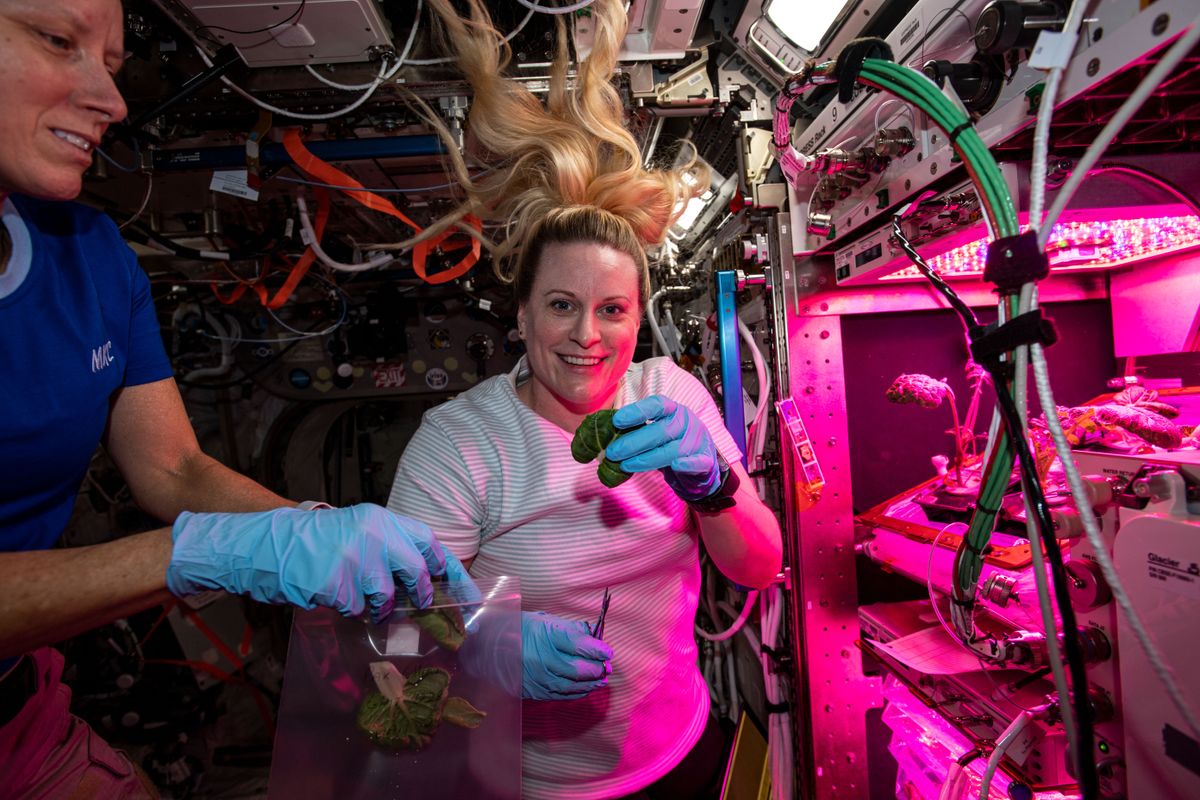NASA astronauts in space talk coronavirus and more with the CDC
NASA astronauts connected with the CDC to discuss how COVID-19 has impacted life on the International Space Station.

Although orbiting astronauts are safely isolated on the International Space Station, the coronavirus has still impacted spaceflyers, according to a conversation between NASA astronauts and the Centers for Disease Control and Prevention (CDC).
NASA astronauts Kate Rubins and Shannon Walker, both living on the space station, spoke with Dr. Inger Damon, director of the division of high-consequence pathogens and pathology at the CDC, on Feb. 10.
Like many of us isolating at home, Walker and the other astronauts who joined Rubins on the space station in November 2020 did whatever they could to avoid catching COVID-19. "We did not want to bring anything up to the space station," she told Damon.
Walker and the three astronauts in her crew trained remotely when possible, but couldn't avoid being in close quarters with each other. When training for a mission, the crew has to be confined inside the tight quarters of the spacecraft — in this case, SpaceX's Crew Dragon spacecraft. To stay as safe as possible, the astronauts wore masks when they had to be close to each other, and kept their distance when possible. To lower the odds of bringing COVID-19 to space, Walker her colleagues quarantined with their families for three weeks before launch.
Rubins had already been aboard the station for about a month before the Crew Dragon team's arrival but followed a similar procedure prior to her own launch; because even a mild cold is a big problem in space, quarantines are a long-standing preflight ritual for astronauts.
But the coronavirus has impacted the astronauts' work, Rubins said, given that research teams on the ground have had to move to mostly remote work, just like many of us on Earth. There has also been some impact on operations between the ground and space, she said, but the astronauts are impressed with how smoothly everything is running despite a pandemic on the ground.
"It's been incredible to watch NASA teams still be on a launch schedule," Rubins said. Despite changing work conditions on Earth, NASA has been able to get cargo vehicles sent to the space station to resupply the astronauts and to bring them experiments, she said. The only hiccup either astronaut mentioned was a delay in their Thanksgiving meal.
Get the Space.com Newsletter
Breaking space news, the latest updates on rocket launches, skywatching events and more!
Walker said that sent her on a creative cooking project, resulting in deconstructed crab cakes made from what the crew had onboard. (Judging from Rubins' big smile and thumbs up, they were delicious.)
One change the pandemic has initiated for those aboard the space station, and those who've been there before is a new frequently asked question: How do you manage social isolation? For 20 years, astronauts have been spending time on the space station, isolated from their family and friends for months, sometimes a year, at a time. Now, many of us on Earth have a sense of what that feels like and we want their advice.
"The important thing is to try to stay connected with friends and family," Walker said. She, Rubins, and other astronauts on the space station make phone calls home whenever they can, have video calls and think of crewmembers as their "space family." Being able to spend time together is essential, Walker said.
Overall, COVID-19 seems to have impacted space much as it has Earth, with shifting work routines and extra precaution. There are also some parallels between the work the CDC is doing on Earth and the work Rubins is doing on the space station. Rubins holds degrees in biochemistry, microbiology and immunology.
She told the CDC about a project to create a comprehensive microbial map of the space station, taking 1,000 swabs around the space. "Everyone floats by and says, 'Kate, are you still swabbing?'" she joked. The aim is to see what microbes exist on the space station and how they might change their behavior in space compared to on Earth.
"I think it's incredibly interesting to see what it's like in a completely artificial environment," she said. "We have no dirt, nothing you'd see in the natural world." It will be illuminating to see how microbes adapt to the completely artificial environment of the space station, she said.
Follow Kasandra Brabaw on Twitter @KassieBrabaw. Follow us on Twitter @Spacedotcom and on Facebook.
Join our Space Forums to keep talking space on the latest missions, night sky and more! And if you have a news tip, correction or comment, let us know at: community@space.com.

Kasandra Brabaw is a freelance science writer who covers space, health, and psychology. She's been writing for Space.com since 2014, covering NASA events, sci-fi entertainment, and space news. In addition to Space.com, Kasandra has written for Prevention, Women's Health, SELF, and other health publications. She has also worked with academics to edit books written for popular audiences.











